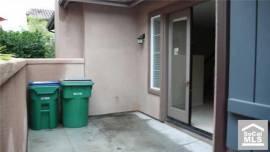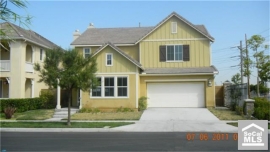Attorneys in Nevada are being criticized for telling people to act like their neighbors and walk away from their mortgage to obtain free housing.
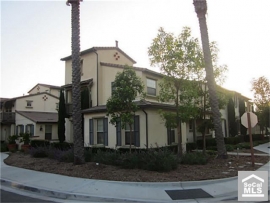
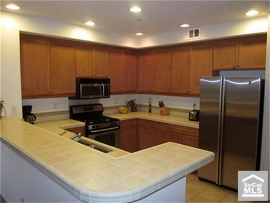
Irvine Home Address … 62 CONCIERTO Irvine, CA 92620
Resale Home Price …… $438,000

Way over yonder, off in the distance
Towards the mountains there in the west
These longhorn cattle, are gettin' restless
God help us all, if they stampede
Chris LeDoux — Stampede
The greatest fear lenders have concerning the herd of underwater borrowers is that loan owners may stampede to the exit. If the masses come to believe they will get years of free housing — which they will — or if loan owners believe the consequences of default are minor — which they are — or if underwater borrowers believe prices aren't coming back soon — which they aren't — then collectively the masses may all default and totally crush the banks and our banking system. 
Lenders have tried everything to prevent borrowers from defaulting. First it was an appeal to morality. This strategy has failed so miserably, that I have concluded the moral issue is really on the side of borrowers. In fact, strategic default is moral imperative to prevent future housing bubbles. Lately, lenders have been resorting to terrorist tactics to prevent default. Despite its limited success, lenders will continue using these tactics as it's the only defense they have left.
Strategic default is gaining momentum, and in places like Las Vegas where most of the housing stock is inhabited by loan owners who would greatly benefit from strategic default, efforts to get the heard to stampede resonate loudly. Show the herd how they benefit financially, and you can get them to move.
Lawyers say public has misconstrued mortgage default ads
By VALERIE MILLER
LAS VEGAS BUSINESS PRESS
Posted: Jul. 29, 2011 | 2:01 a.m.
Updated: Jul. 29, 2011 | 9:48 a.m.
Their television commercials about mortgage defaults ignited a debate about ethics and financial responsibility. Now, the two Las Vegas lawyers behind the ad campaign say people are misunderstanding their message.
The Haines & Krieger TV spots advise homeowners that their friends and family are staying in their homes without paying on their mortgages, and offer to show clients how to do the same.
But George Haines and David Krieger, the lawyers who appear in those ads, say the message is not that those homeowners with the means to pay should skip out on their mortgages.
 Actually, yes, the ads do tell loan owners they should skip out on their mortgages. In Las Vegas, with many loan owners 30% to 50% underwater facing payments double a comparable rental, they should strategically default.
Actually, yes, the ads do tell loan owners they should skip out on their mortgages. In Las Vegas, with many loan owners 30% to 50% underwater facing payments double a comparable rental, they should strategically default.
These attorneys are being wimps and offering lawyerly evasions. If they really wanted to tell people the truth, they should stand behind their words and the implications. Most of Nevada is so far underwater they should default. It's in the best interest of their families to do so.
Rather, the commercials are offering a lifeline to people who might otherwise lose their homes through foreclosure.
“The ad campaign is geared toward empowering consumers with information they did not have,” Krieger said.
The ad wants to empower people with the information to strategically default. More power to them.
The commercials have brought business to Haines & Krieger, a law firm offering mortgage modifications, bankruptcies and short sales. But that increased business is not just from those people looking to bail on their financial responsibilities, Haines said.
“These are people who are undergoing dire circumstances and need some time in their homes to get their lives together,” he said.
They need some time in their homes? Is there some reason they couldn't spend that time in a rental? These guys should at least make their bullshit pass the giggle test.
Lenders, real estate professionals and consumer advocates have criticized the TV spots. Nasser Daneshvary, the director of the Lied Institute for Real Estate Studies at the University of Nevada, Las Vegas, worries about the devastating ripple effect of people bailing on their mortgages.
“When you dump your house, you increase the odds that your neighborhood will become blighted, or a rental community,” he said. “You are in turn damaging Clark County and the greater community.“
Egad! A rental community! The horror of it.
The blight argument is nonsense. Mr. Daneshvary is wrong on many levels. First, his contention that rental communities are blight is ridiculous. Blighted areas often are inhabited by renters paying low rents because they are undesirable and nobody wants to live there. The blight comes first, and the habitation by renters paying very little comes second. It's not the other way around.
The extension of his argument that renters lead to blight which damages the greater community is insulting to all renters. Based on his statements, I conclude he is a loan owner who probably should strategically default but doesn't have the courage to pull the trigger. If he owns in Las Vegas, he is almost certainly under water. Nearly 90% of owners are.
But the Haines & Krieger partners say their ads are simply letting distressed homeowners know they have options, and need not just sit and wait for eviction after receiving a foreclosure notice.
That is not accurate. Their ad is aimed at people who are currently paying their mortgages but considering default. The target market for this ad has not received a foreclosure notice.
“Most of our clients really can't afford their mortgages and need a modification,” Haines said. “You have people who can't afford their mortgages and can't get the lenders to negotiate with them.”
Krieger says many clients work out loan modifications and avoid foreclosure.
“We don't advocate foreclosure,” Krieger said. “It will ruin their credit.”
Short sale or foreclosure will ruin their credit, and the missed payments required to get a loan modification hurts a borrower's credit too. And the truth is strategic default consequences minor and likely to decrease.
Daneshvary is skeptical of the lawyers' explanation. Viewers, he says, are smart enough to get the point of the TV spots.
“As for the ad itself, as consumers, we know what the message is, 'Follow your neighbor by getting out of monthly payments,' ” he said.
Yes, that is exactly the point of the ad. It's unfortunate the attorneys felt they couldn't simply admit it.
Michele Johnson, president and CEO of Consumer Credit Counseling Service of Nevada and Utah, said she believes the Haines & Krieger spots are encouraging people to strategically default on their mortgages.
Yes, the ads are encouraging strategic default.
“I find it irresponsible advertising,” she said. “I think it certainly attempts to legitimize defaults.”
I'm sorry to inform Ms. Johnson, but defaults have already been legitimized. Strategic mortgage default has become common and accepted in 2011.
The number of people still living in their homes with delinquent mortgages is hard to calculate, Daneshvary adds. Because out-of-state investors bought multiple houses in Southern Nevada during the real estate boom, many foreclosed homes were never occupied full time.
However, Daneshvary estimates about 30 percent of Las Vegas Valley homes are now in some stage of loan delinquency.
 A 30% delinquency rate is astonishingly high. It is reasonable given the circumstances. If a 30% delinquency rate is maintained long enough, 90% of the housing stock will turn over as the 30% in delinquency is turned over three times.
A 30% delinquency rate is astonishingly high. It is reasonable given the circumstances. If a 30% delinquency rate is maintained long enough, 90% of the housing stock will turn over as the 30% in delinquency is turned over three times.
The option of strategically defaulting on your mortgage has been gaining in popularity over the last few years.
A Nevada Association of Realtors report released in January found that 23 percent of those surveyed “walked away” as part of a strategic default.
And another 77% failed to admit it… I made that up, but it is not far from the truth.
Johnson points to the damage a mortgage default does to a person's credit: About a 100-point drop in the credit score as a result of the first missed house payment, and another approximately 100 points off when the second mortgage payment is missed.
As I pointed out above, strategic default consequences minor and likely to decrease. The scare tactic on hurting a FICO score doesn't work anymore, just like the morality issue not longer holds sway.


Nonprofit services, including Consumer Credit Counseling, will help people get loan modifications for free, she said.
In response to all the criticism, Haines notes that plenty of Southern Nevadans are already staying in their homes without making payments, regardless of Haines & Krieger's commercials.
ForeclosureRadar.com, a Discovery Bay, Calif.-based tracker of distressed real estate, said recently the average number of days it takes to foreclose on a home in Nevada rose to 319 days, up from 239 days a year ago.
“Why are banks taking so long to foreclose? They don't have their ducks in a row,” Haines said. “It is a product of the banks.”
Contact reporter Valerie Miller at vmiller@lvbusinesspress.com or 702-387-5286.
The banks have their ducks in a row, they simply lack the balance sheet strength to write down all the bad debt, and if they did foreclose on everyone and put the houses for sale, they would so saturate the MLS with product the prices would get pushed back to 1970s levels while the market cleared out.

Bad luck compounded
Every house has a story. The HELOC abuse cases are interesting, but the property records reveal other stories. Today's is very sad. The peak buyers of today's featured property paid $592,000 on 5/31/2006. They couldn't have timed the peak any worse. They borrowed $422,000 and put $170,000 down. The asking price will completely wipe out the down payment. Every penny is gone.
The remaining owner of this property is a widow according to the property records. The stress of losing $170,000 and the family home is bad enough, but this woman also lost her spouse. Very sad. Unfortunately, the market does not care about this widow's problems. I hope someone pays enough for her to get out without damaging her credit as well. The $2,200 monthly cost of ownership is at or below rental parity, and even an FHA buyer's cost of ownership is only $2,800. Somebody will likely pay this price.
——————————————————————————————————————————————-
This property is available for sale via the MLS.
Please contact Shevy Akason, #01836707
949.769.1599
sales@idealhomebrokers.com


Irvine House Address … 62 CONCIERTO Irvine, CA 92620
Resale House Price …… $438,000 
Beds: 2
Baths: 2
Sq. Ft.: 1562
$280/SF
Property Type: Residential, Condominium
Style: Two Level, Spanish
Year Built: 2006
Community: Woodbury
County: Orange
MLS#: S663108
Source: SoCalMLS
Status: Active
On Redfin: 42 days
——————————————————————————
Model Perfect very affordable light and bright home located in the fabulous and highly sought after Woodbury Community in Irvine just blocks from the coveted Woodbury Elementary school, community pool, and Woodbury shopping center. 2 balconies including one off the master suite which features a private full bath, great kitchen with lots of cabinets, cozy gas fireplace in the living room, 2 car garage, and much much more!
——————————————————————————————————————————————-
Proprietary IHB commentary and analysis ![]()
Resale Home Price …… $438,000
House Purchase Price … $592,000
House Purchase Date …. 5/31/2006
Net Gain (Loss) ………. ($180,280)
Percent Change ………. -30.5%
Annual Appreciation … -5.7%
Cost of Home Ownership
————————————————-
$438,000 ………. Asking Price
$87,600 ………. 20% Down Conventional
4.53% …………… Mortgage Interest Rate
$350,400 ………. 30-Year Mortgage
$76,358 ………. Income Requirement
$1,782 ………. Monthly Mortgage Payment
$380 ………. Property Tax (@1.04%)
$200 ………. Special Taxes and Levies (Mello Roos)
$91 ………. Homeowners Insurance (@ 0.25%)
$0 ………. Private Mortgage Insurance
$290 ………. Homeowners Association Fees
============================================
$2,743 ………. Monthly Cash Outlays
-$298 ………. Tax Savings (% of Interest and Property Tax)
-$459 ………. Equity Hidden in Payment (Amortization)
$147 ………. Lost Income to Down Payment (net of taxes)
$75 ………. Maintenance and Replacement Reserves
============================================
$2,208 ………. Monthly Cost of Ownership
Cash Acquisition Demands
——————————————————————————
$4,380 ………. Furnishing and Move In @1%
$4,380 ………. Closing Costs @1%
$3,504 ………… Interest Points @1% of Loan
$87,600 ………. Down Payment
============================================
$99,864 ………. Total Cash Costs
$33,800 ………… Emergency Cash Reserves
============================================
$133,664 ………. Total Savings Needed
——————————————————————————————————————————————————-
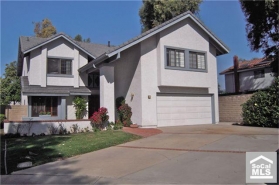
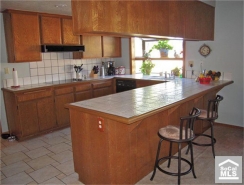











.jpg)




.jpg)




.png)


